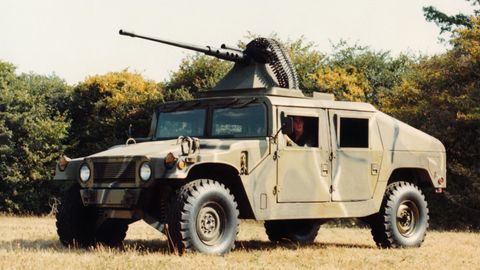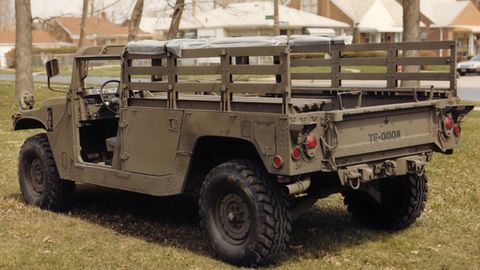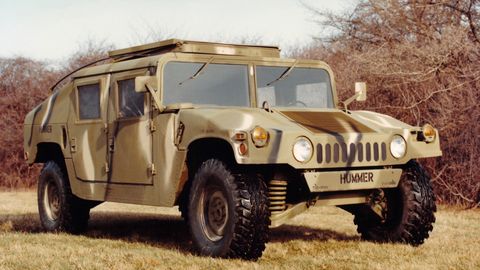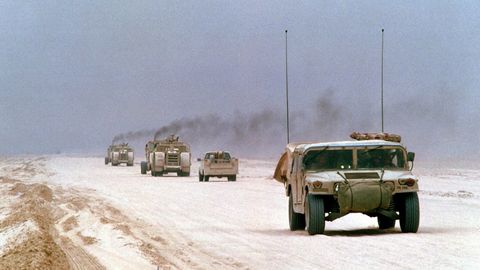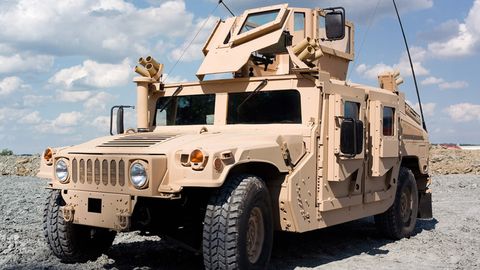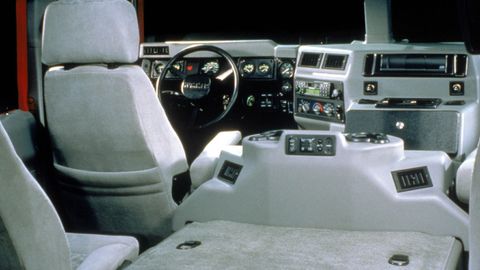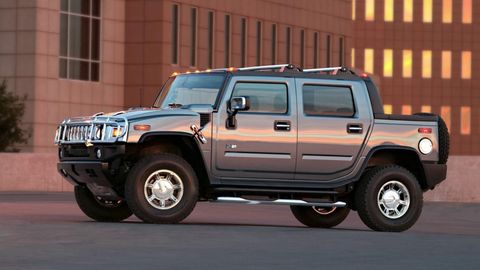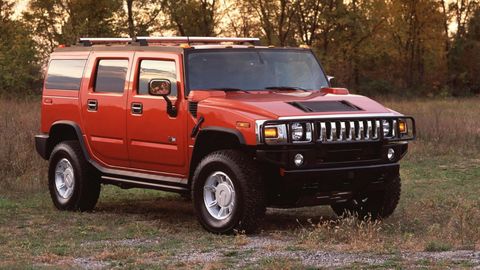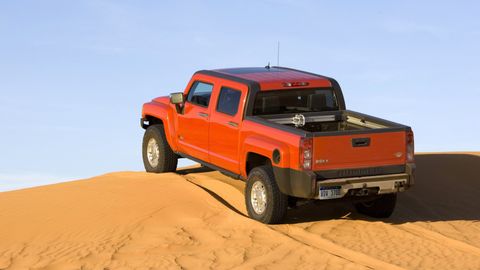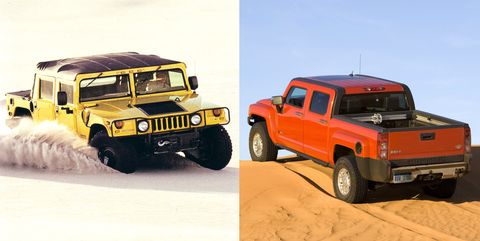
Hummer’s return as an electric truck and SUV fits perfectly into the larger history of the brand and the machine: It has played many different roles over the decades, at home and overseas. From replacing a large variety of military vehicles at the start of the 1980s, through the H3’s debut on a midsize truck platform, Hummer vehicles have always seemed to find a niche, no matter the era. The Hummer brand’s latest transformation, now under GM, opens a new era for the American icon that has been with us for the better part of the past four decades.
The first vehicle we associate with the Hummer family was envisioned as a replacement for several small vehicles and light trucks the U.S. armed forces had been using from the 1950s through the Vietnam War for various roles, including modernized version of the Jeep and the Dodge M37. Officially called the High Mobility Multipurpose Wheeled Vehicle (HMMWV), the Humvee as it became known was intended to replace a whole range of vehicles, offering numerous versions.
The first HMMWV emerged out of a field of more than 10 different designs considered by the High Mobility Combat Vehicle program. Three companies built prototypes of competing vehicles: AM General, Teledyne Continental and Chrysler Defense.
A 6.2-liter V8 paired with a three-speed automatic transmission powered AM General’s winning design. The model had more than a 5,000-pound curb weight and a wide track — 7 feet, 1 inch — designed for stability. Incidentally, the HMMWV’s width would have made it difficult to use in older European cities, when a land war in Europe between the Warsaw Pact and NATO was still considered a possibility.
In 1983 AM General was awarded the contract to produce an initial batch of vehicles, consisting of a bit more than 2,000 Humvees. Tens of thousands more were produced by the end of the 1980s. So the HMMWV actually entered service years before Operation Desert Storm made “Humvee” a household term in the U.S.
The first military use took place in 1989 and 1990 during Operation Just Cause, lasting a bit more than a month and consisting of 26,000 U.S. troops in a land invasion of a Panama. The operation’s outcome included dictator Manuel Noriega’s arrest and formally breaking up Panama’s armed forces.
The Humvee gained considerable publicity during Operation Desert Storm. However, the operation’s active phase lasted 100 hours, and smaller ground vehicles including the Humvee saw limited engagements with Iraqi forces. Moreover, the HMMWVs in use at the time were not armored. Thus they were not designed to withstand small arms fire and their utility on the front lines was limited. Even the unarmored design did not offer much ballistic protection against small arms or shrapnel.
The HMMWV also saw military action in Somalia in 1993, with Army Rangers and U.S. special forces. The unarmored HMMWVs proved susceptible to small arms fire, especially in urban warfare. The high casualty rate demonstrated the need for armored versions that could operate closer to the front lines or in areas with armed insurgencies. The M114, the armored version, was developed after the battle in Somalia, and would be the first of several armored variants, like the later BAE M1151 seen here.
Arnold Schwarzenegger played a key role in the emergence of demand for privately owned Humvees. The first civilian version did not go on sale until spring, 1992, marketed as the Hummer H1. Several different versions were offered including a four-door pickup, a four-door station wagon, a four-door slantback, a two-door pickup, and a four-door pickup with a convertible soft top.
Engines under the hood of the civilian H1 included a turbocharged 6.5-liter Detroit Diesel V8, a 6.2-liter GM diesel V8, and a 6.6-liter Duramax turbodiesel V-8. A gasoline 5.7-liter Vortec V8 was also on the menu. Transmissions were automatics, and included an Allison five-speed toward the end of production, as well as a three-speed and a four-speed earlier on in the product cycle.
The civilian H1 was able to ford 30 inches of water, had a central tire inflation system allowing the driver to decrease or increase pressure with a press of a button as an option and also had an available leather interior. But the H1 was also not particularly roomy inside and not very tall given the height of the floor.
The civilian H1 spent 14 years on the market, from 1992 through the 2004. Sales were actually quite modest in proportion to its popular image. In total, 11,818 H1s were sold during the 14-year run.
A concept shown at the 2000 Detroit auto show previewed the Hummer H2, aiming to take the brand mainstream given the rising popularity of large SUVs in the U.S.
The Hummer H2 debuted for the 2002 model year, keeping the H1’s general design direction while using a GM truck platform, along with beefy V8 engines. A 6.0-liter V8, good for 316 hp, powered the truck during the first two years of manufacture, while a 325-hp version of the same engine was offered from 2004 onwards. A 6.2-liter V8 was offered for the last two years of production, good for 393 hp.
The H2 was also offered as a four-door pickup, even though the H2T’s usable cargo room was quite limited. The SUV and the pickup versions were both lifestyle vehicles, so on-road ability and luxury features took priority over many other considerations, including fuel economy and advanced off-road ability. Sales were the strongest during the second, third and fourth years of production, but tapered off significantly toward the end of the decade.
During the Iraq War, the vast majority of the Humvees deployed to the country were initially unarmored, and only received improvised armor Army mechanics created later on. Even by the end of 2003, the U.S. Army had 12,500 unarmored Humvees in use in Iraq, and only 1,500 armored ones. Still, there was only so much steel and ballistic glass that could be feasibly added to the exteriors and interiors in the field, so the vehicles were often vulnerable to small arms fire and IEDs.
Due to ongoing insurgencies in Iraq and Afghanistan, the Pentagon began a program to eventually replace the Humvee with a new design, one intended to carry a lot of armor from the start and also offer increased protection against mines and IEDs. Military operations in the 2000s also forced the armed forces to source entirely new and existing designs for MRAPs to perform patrol and other roles, often in short time frames.
The gas crises in the mid 2000s and the 2008 economic crash hurt the popularity of the H2 and H3, and they became to be seen as caricatures of an era of excess and cheap oil. H2 sales had slowed to a trickle by 2009, the last year of production.
GM introduced the Hummer H3 starting in the 2006 model year, fielding a smaller and more nimble model based on a truck platform shared with the GMC Canyon and Chevrolet Colorado. The smaller model was offered as an SUV and as a pickup. The base engine in the truck was also borrowed from GM’s midsize offerings — a 3.5-liter inline-five — but a V8 was also on the menu in the form of a 5.3-liter V8.
Unlike the H2, the H3 was not built by AM General at its Military Assembly Plant in Indiana. The H3 was built in Shreveport, Louisiana for the North American market, while for Europe, Africa and Australasia the H3 was built in Port Elizabeth, South Africa.
Both the H2 and H3 were also assembled in Kaliningrad, Russia, due to the high import duties at the time. Still, the H2 and H3 saw only mild popularity in Europe due to their size and fuel economy.
H2 production ended in 2009 while the last H3 rolled out of the factory in 2010.
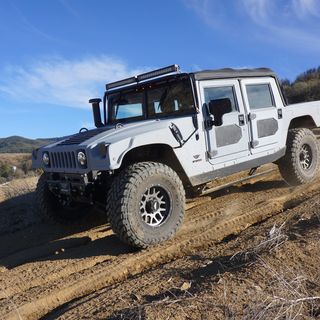
Source: Read Full Article

